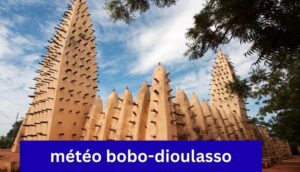
Music and dance are universal languages that transcend cultural boundaries and connect people from all corners of the world. They hold the power to express emotions, tell stories, and foster a sense of community. This article embarks on a captivating journey through the enchanting world of global music and dance, exploring the diverse rhythms that echo the heartbeat of various cultures. From the rhythmic drumbeats of Africa to the graceful movements of classical ballet, we will delve into the rich tapestry of human expression that is interwoven with melodies and movements.
The Universal Language of Rhythm
Rhythm is the foundation of both music and dance, serving as a common thread that unites cultures across the globe. It mirrors the natural rhythms found in our surroundings – the heartbeat, the rustling of leaves, and the crashing of waves. In Africa, traditional drumming and percussion instruments create intricate rhythms that evoke a primal connection with nature and community. The djembe, for instance, produces a myriad of tones that communicate stories, celebrations, and even warnings across villages.
Africa: A Continent of Rhythmic Diversity
Africa’s influence on global music and dance cannot be overstated. From the infectious beats of Afrobeat to the soulful melodies of African blues, the continent has birthed an array of genres that have left an indelible mark on the world. The rhythmic traditions of African dance celebrate life, mark milestones, and express social and spiritual narratives. The exuberant energy of dances like the South African Gumboot dance or the West African Azonto reflects the resilience and vitality of their respective communities.
Latin Passion and Rhythms
As we journey across continents, we arrive in Latin America – a region that pulses with passionate rhythms. The sultry sounds of the tango, born on the streets of Buenos Aires, Argentina, embody the sensual connection between music and movement. The samba of Brazil captures the exuberance of Carnival, inviting both dancers and spectators to revel in its infectious energy. These dances, accompanied by vibrant music, intertwine the histories and cultures of indigenous, European, and African peoples.
Asia: Where Tradition Meets Innovation
In Asia, the fusion of tradition and innovation is evident in the realm of music and dance. Classical forms like India’s Bharatanatyam and China’s Peking opera continue to mesmerize audiences with their intricate choreography and emotive storytelling. Meanwhile, modern genres, such as K-pop from South Korea, have taken the world by storm, showcasing the power of globalization in shaping musical trends.
Europe’s Classical Elegance
Classical music and dance in Europe reflect a certain elegance and sophistication. Ballet, originating in the courts of Renaissance Europe, epitomizes grace and precision. With its ethereal leaps and graceful pirouettes, ballet narrates stories both timeless and contemporary. Composers like Ludwig van Beethoven and Wolfgang Amadeus Mozart have left an indelible mark on the classical music landscape, their symphonies and concertos still enchanting audiences worldwide.
The Fusion of Cultures
In the modern era, globalization and technological advancement have led to a fascinating fusion of musical and dance styles. Genres like hip-hop and electronic dance music (EDM) exemplify how cultures can blend to create new and exciting art forms. Hip-hop, born in the neighborhoods of the Bronx in New York City, has become a global phenomenon, advocating for social change while celebrating creativity. EDM festivals unite people from different corners of the world, fostering a shared experience through pulsating beats and synchronized movements.
Cross-Cultural Collaborations
In recent years, musicians and dancers have embraced cross-cultural collaborations, resulting in a harmonious blend of styles that transcend geographical limitations. Artists from different continents come together to create music that celebrates diversity while emphasizing our shared humanity. These collaborations serve as a reminder that, despite our differences, we can find common ground through the universal languages of music and dance.
Preserving Cultural Heritage
Amidst the rapid pace of globalization, it is crucial to preserve and honor traditional music and dance forms. Cultural heritage is a treasure trove of knowledge, history, and identity that deserves protection. Organizations and individuals around the world are working tirelessly to document and pass down these traditions to future generations. Through festivals, workshops, and educational initiatives, the beauty and significance of cultural rhythms continue to thrive.
Conclusion
Enchanted rhythms are the heartbeats of humanity, resonating with the deepest facets of our being. As we traverse continents and immerse ourselves in the diverse melodies and movements, we come to understand the power of music and dance to bind us together. They tell stories of our past, celebrate our present, and envision our future. This journey through global music and dance reinforces the idea that, though we may hail from different cultures, our shared love for rhythm unites us in a harmonious symphony of life.







